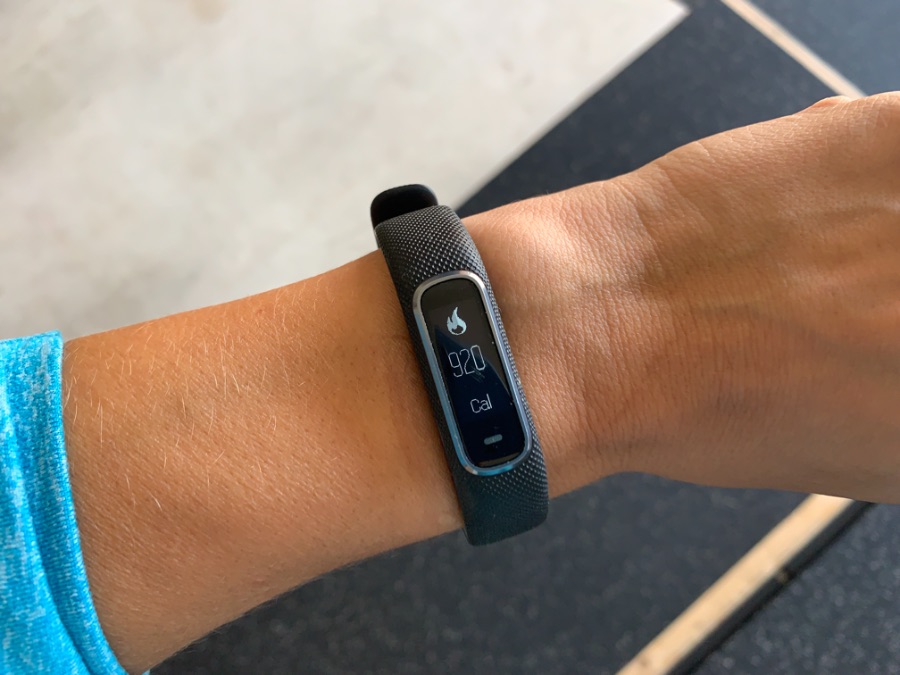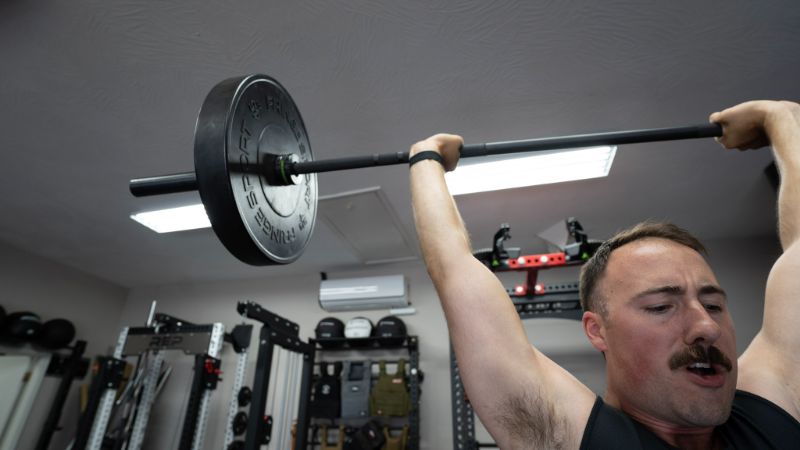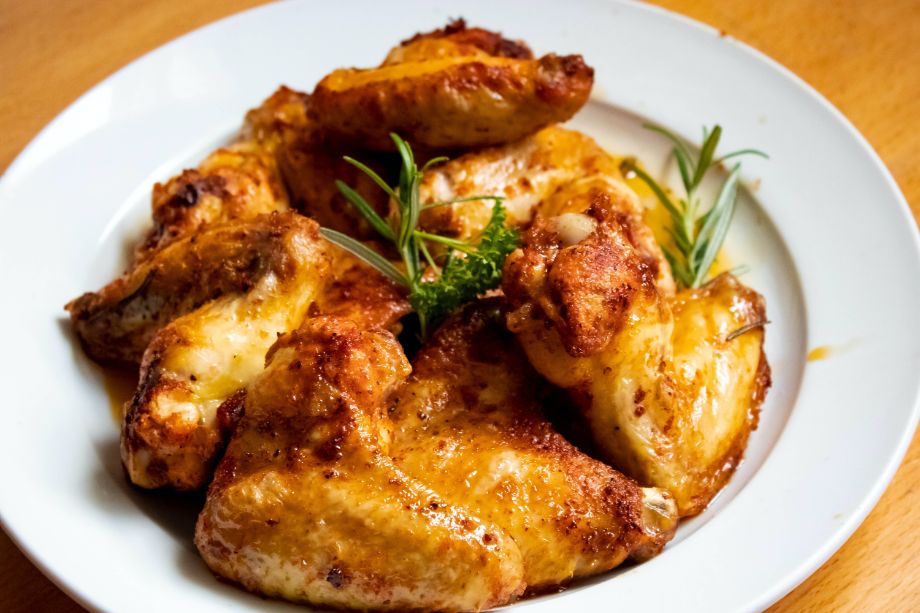We test and review fitness products based on an independent, multi-point methodology. If you use our links to purchase something, we may earn a commission. Read our disclosures.
Raise your hand if you’ve ever had this thought after a really tough Tabata cardio workout: “Why can’t I burn calories just by existing?” If you raised your hand, listen—I get it! And there’s absolutely no judgment here. I’m very aware of how some exercise routines can give you a run for your money and have you questioning if there are other ways to burn a ton of calories with less effort.
Fortunately, my friends, there are other ways. While nothing will replace the many benefits of HIIT workouts and strength training, there are things you do daily that are calorie-burners.
Therefore, we will take a deep dive into the different ways our bodies expend energy. Then after that, we will reveal everyday activities that burn the most calories so you can optimize your calorie and fat-burning.
Types Of Energy Your Body Expends
Our bodies expend energy in different ways. Every moment we’re going through a process of combustion—but what exactly does this mean?
According to a publication in the National Library of Medicine1, “the metabolism of an organism requires energy production by the combustion of fuel in the form of carbohydrate, protein, fat, or alcohol.” In layperson’s terms, this means that our body takes the fuel from the foods and drinks we consume and then expends that energy through bodily functions and movement.
Each of us carries a regular supply of energy, but we don’t all require the same amount of energy to live. Factors1 such as body size, body composition, food intake, sex, climate, and physical activity all play a part in our daily energy requirements.
In order to find out your total energy expenditure, you’d have to know the four different ways we burn energy:
- Basal metabolism
- Exercise activity
- Thermic effect of food (TEF)
- Non-exercise activity thermogenesis (NEAT)
The reason why having an understanding of energy expenditures matters is because it directly ties into weight loss, weight gain, and weight stabilization.
“To boil it down to something admittedly oversimplified, if you want to lose weight, your energy expenditure has to exceed your energy intake,” says personal trainer and GGR Head of Content Kate Meier. “If you want to gain weight, your energy intake must exceed your energy expenditure. If you just want to maintain your current body weight, then you need a good balance between the energy you consume and the energy you expend doing physical activities.”
There are factors beyond just calories in, calories out, that can make weight loss and weight gain difficult for people, but for the sake of this article, we’re going to focus just on calorie burn.
RELATED: The Best Cardio Exercises at Home

Basal Metabolism
Basal metabolism2 is defined as “the energy required for performing vital body functions at rest.” Necessary bodily functions such as breathing, maintaining body temperature, nervous system activity, and hormone management all fall under this category. Think of this as the calories you burn by just laying on the couch, existing.
In fact, basal metabolism is the largest contributor2 to energy expenditure. This category makes up 60% to 75% of the energy3 used daily to sustain life.
We all have different basal metabolism rates (BMR). Factors like our weight, height, age, body composition, and sex4 all greatly influence our BMR, and for several reasons:
- Weight/Height: Larger people tend to have more metabolically active tissue5
- Age: Our metabolism slows with age6
- Body composition: Muscle tissue typically uses more calories than fat
- Sex: Men usually have a faster metabolism than women because they tend to have more muscle tissue
Although the typical amount of energy used differs for each of us, there are general recommendations for the number of calories we should consume daily. For example, according to the Dietary Guidelines for Americans7, most female adults should have a caloric intake of 1,600–2,000 daily, and most adult males should have a caloric intake of 2,200–2,400 daily.
RELATED: How Many Calories Does Walking a Mile Burn?

Exercise Activity
According to the American Council on Exercise8, physical activity is the second largest factor influencing a person’s daily caloric requirements. Approximately 6 to 10% of our total energy expenditure9 comes from physical activity. While basal metabolism refers to the calories we burn just by existing, exercise activity refers to the calories we spend while working out.
Exercise is considered the most variable9 of all the energy expenditures. One reason is that exercising is a voluntary activity, so some might not do it all. Another reason for this variability is that our daily caloric requirements change8. The number of calories we expend is based on the duration, intensity, and frequency with which we exercise. A final explanation for variability could be that, as individuals, we just don’t burn calories the same, even while exercising.
For instance, those with larger bodies require more calories to move. A 2011 study10 found that up to 43% of the variation in total calorie burn between individuals was a result of them having differences in the size of their internal organs. In addition, the amount of fat mass you carry matters, too. When exercising, the body first burns off the stored glycogen and then starts burning mostly fat11.
RELATED: A Look at the Fat-Burning Heart Rate Zone
As you lose weight, you may also burn fewer calories12 during certain types of exercise and in your overall energy expenditure. To give you a better idea of what this looks like, let’s check out some examples of the number of calories burned13 in 30 minutes for those of different sizes doing different activities.
- Low-impact aerobics: The body may burn 165 calories in a 125-pound person compared to burning 231 calories in a 185-pound person.
- Jumping rope (fast): The body may burn 340 calories in a 125-pound person compared to burning 503 calories in a 185-pound person.
- Bicycling (stationary bike) or using a rowing machine: The body may burn 210 calories in a 125-pound person compared to burning 294 calories in a 185-pound person by using these machines at a moderate pace.
We can’t forget also to mention that exercise such as high-intensity interval training can increase your basal metabolism energy expenditure14. Your basal metabolism should remain elevated as long as you regularly work with moderate to high intensity out at least three days a week. With activities like strength training, you’ll build muscle, which can lead to burning more calories even while at rest.
(Note: If you find yourself hitting a plateau regarding weight loss or weight gain, we recommend contacting a certified nutritionist and/or a certified personal trainer, AKA a CPT. They can direct you on the various forms of exercise you can do at different stages of your fitness journey so that you continue making progress.)
RELATED: The Benefits of Weight Training for Women

Thermic Effect of Food (TEF)
Did you know we also burn a lot of calories just by absorbing, digesting, metabolizing, and storing our food? It’s true! This accounts for around 10% of our daily energy expenditure15. Like the other expenditures, the exact amount of energy needed for this process differs for each person. Factors such as age, insulin resistance, and physical activity play a role.
As we age, our TEF15 rate tends to decrease. Also, if you have Type 2 diabetes, your TEF rate may be reduced, so you may not burn as many calories while digesting food. One 2018 study16 found that physically active individuals had a 31% to 45% higher thermic effect of food rate than people who are sedentary.
One major factor that we can’t overlook is what we eat. A 2016 study17 showed that eating high-protein foods in a meal provided a 10% higher TEF rate than low or medium-protein meals. However, they noted that this only impacted the current meal and didn’t have a long-lasting effect on overall metabolism. Also, compared to high-fat and high-carb meals, high-protein foods accounted for a 17% increase in TEF. Unprocessed foods15 that are high in fiber tend to boost our TEF, too.
Non-Exercise Activity Thermogenesis (NEAT)
And finally, we have reached NEAT, our fourth and final energy expenditure. Non-exercise activity thermogenesis makes up about 10% of our daily energy expenditure and refers to physical activity that isn’t voluntary exercise18. This can include walking from the car to the store, cleaning your house, and doing laundry. According to the Mayo Clinic19, it could account for 800 to 1,000 calories daily.
As one 2018 study20 revealed, “these somewhat unplanned and unstructured low-grade physical activities can have a remarkable effect on metabolic rate and…stimulate greater energy expenditure over time.”
What’s even more compelling is that this same study assessed how energy expenditure influenced by NEAT was much larger than exercise activity when measured over the day. Now, this doesn’t mean that we should kick calorie-burning exercises to the curb; it just means that we should look at how the simple physical activities we do daily can help our body burn calories.

Daily Activities That Increase NEAT
So, what types of activities increase NEAT that everyone, from beginners to athletes, can do? The activities are ranked from most to least calories burned and are based on individuals who weigh between 125 and 185 pounds. (Activities and information sourced from Harvard Health.13)
#1: Cycling on Your Commute
One major way to burn calories is to ditch driving to work and hop on your bicycle instead. For example, cycling for 30 minutes while going 12 to 13.9 MPH burns approximately 240 to 336 calories.
RELATED: The Best Exercise Bikes
#2: Shoveling Snow and Chopping Wood
If you don’t mind shoveling some snow during the winter months, you’ll like this. Thirty minutes of shoveling snow by hand can burn between 180 and 252 calories. These will feel like a full-body workout because you’re using your upper back, shoulders, core, quads, and more. Chopping wood is another activity you could do that’ll expend about the same amount of calories.
#3: Mowing the Lawn
Instead of paying someone to mow your lawn, you could do it yourself! You’ll not only save some money, but you’ll expend some calories, too. Thirty minutes of lawn mowing with a power mower will burn between 138 and 189 calories. However, you’ll burn even more calories using a manual mower. That’ll burn off 165 to 231 calories.
#4: Gardening
When springtime comes around, many people start gardening to beautify their yards. But that doesn’t have to be the only reason you garden. If you’ve ever done it before, then you know it requires quite a bit of upper-body and lower-body movement.
For example, you’ll likely have to squat or hinge to pull weeds and dig a hole for your plants. Plus, you’ll have to lift and carry your compost and much more. All of this could easily burn 135 to 189 calories in 30 minutes.

#5: Heavy Cleaning and Walking
I don’t know about you, but cleaning up can cause me to break a sweat, especially if it’s heavy-duty cleaning. However, walking at a moderate pace for 30 minutes can also increase your heart rate. Both activities can burn 138 to 189 calories.
RELATED: Is Walking the Best Cardio?
#6: Playing With Kiddos
Kids have a lot of energy, and trying to keep up with them costs us a lot of energy. So you can expect to burn about 114 to 168 calories just trying to keep up with them, as long as you are moving at least at a moderate pace.
#7: Grocery Shopping With A Cart
When you go grocery shopping, even with a cart, you use your entire body to do it. Seriously, all your major muscle groups play a part in getting everything you need to feed yourself and others. Just think about it: That large 32-bottle case of water isn’t going to pick up itself. And if you want to buy store-brand products, be prepared to squat down and get them from the very bottom shelf. All of this could lead to burning 85 to 126 calories or more in 30 minutes.
#8 Cooking
After going to the store, you’ll have to prepare some of the food you bought, which could burn even more calories. Researchers have found that in 30 minutes, you can expect to spend about 57 to 84 calories (granted, this probably relies on you being on your feet and moving constantly, not just sitting and waiting for water to boil).
#9 Reading
Sitting down and reading a book sounds so leisurely, yet it still burns calories. Can we say, multitasking? Thirty minutes of reading could help you burn 34 to 47 calories. It could be even more if you’re unknowingly fidgeting, which many of us do.
#10 Typing
I’m not going to lie; this part excited me because I do a lot of typing, and in this digital world, you probably do, too. If you type for 30 minutes, you’ll burn about 40 calories. That’s not too shabby! Bonus: Sitting down to watch TV burns about 40 calories, too.

Other Activities To Increase NEAT:
If you’re looking for a few additional ways to increase NEAT, consider these:
- Walking a dog
- Taking the stairs instead of the elevator
- Using a standing desk
- Painting
- Standing in line
- Carrying boxes
- Pace while talking on the phone
Activities That Burn The Most Calories: Final Thoughts
As you can see, high-impact activities aren’t the only way to burn calories. Many of the miscellaneous things we partake in daily, voluntarily and involuntarily, help us spend energy. While we should strive to exercise regularly since it’s great for our cardiovascular health, we realize there are other ways to maximize our daily energy expenditures.
The key is to understand your goal, do the best exercises for your current fitness level, and learn the amount of calories you need to expend every day to achieve your ideal body weight.
Remember the following:
- Basal metabolism is the energy we require to complete vital bodily functions while at rest.
- Exercise activities include the voluntary workouts we partake in, like high-intensity interval training, strength training like doing weighted lunges, and more.
- Thermic effect of food is the energy we expend to digest and store the foods and drinks we consume.
- Non-exercise activity thermogenesis (NEAT) is the bodily movements we make that are not voluntary exercise.
Activities That Burn The Most Calories: FAQs
How Do You Calculate Your Basal Metabolic Rate?
If you want to calculate your basal metabolic rate, you should try using the Harris-Benedict equation21. The information you’ll need is your current weight, height, age, and sex. In addition, there are two different formulas. One is to be used by men and the other by women.
For men: BMR = 66.5 + (13.75 × weight in kg) + (5.003 × height in cm) – (6.75 × age)
For women: BMR = 655.1 + (9.563 × weight in kg) + (1.850 × height in cm) – (4.676 × age)
How Do You Calculate Your Thermic Effect of Food (TEF) Rate?
If you really want to know your thermic effect of food rate22, you’ll need a science lab. This is because measuring the difference in energy expenditure between fed and fasting states is complex. You’d need to be in a controlled environment to obtain this information.
How Do You Calculate Your NEAT Rate?
You can calculate your NEAT rate with this formula23: TDEE − (BMR+TEF). For clarification, TDEE stands for total daily expenditure. Unfortunately, you wouldn’t get an accurate number without having your TEF.
References
- Control of energy expenditure in humans – endotext – NCBI bookshelf. Definitions, Classification, and Epidemiology of Obesity. https://www.ncbi.nlm.nih.gov/books/NBK278963/. Accessed April 14, 2023.
- Sabounchi NS, Rahmandad H, Ammerman A. Best-fitting prediction equations for basal metabolic rate: informing obesity interventions in diverse populations. Int J Obes (Lond). 2013;37(10):1364-1370. doi:10.1038/ijo.2012.218
- Pethusamy K, Gupta A, Yadav R. Basal metabolic rate (BMR). Encyclopedia of Animal Cognition and Behavior. March 2019:1-3. doi:10.1007/978-3-319-47829-6_1429-1
- Vybornaya KV, Sokolov AI, Kobelkova IV, Lavrinenko SV, Klochkova SV, Nikityuk DB. Vopr Pitan. Basal metabolic rate as an integral indicator of metabolism intensity. 2017;86(5):5-10. doi:10.24411/0042-8833-2017-00069
- Carneiro IP, Elliott SA, Siervo M, et al. Is Obesity Associated with Altered Energy Expenditure?. Adv Nutr. 2016;7(3):476-487. Published 2016 May 16. doi:10.3945/an.115.008755
- Bartke A, Brannan S, Hascup E, Hascup K, Darcy J. Energy Metabolism and Aging. World J Mens Health. 2021;39(2):222-232. doi:10.5534/wjmh.200112
- Dietary Guidelines for Americans. https://www.dietaryguidelines.gov/. Accessed April 14, 2023.
- Ace Fit: Physical activity calorie counter. ACE Fit | Physical Activity Calorie Counter. https://www.acefitness.org/resources/everyone/tools-calculators/physical-activity-calorie-counter/. Accessed April 14, 2023.
- Energy Expenditure – an overview | ScienceDirect Topics. https://www.sciencedirect.com/topics/medicine-and-dentistry/energy-expenditure. Accessed April 14, 2023.
- Müller MJ, Langemann D, Gehrke I, et al. Effect of constitution on mass of individual organs and their association with metabolic rate in humans-a detailed view on allometric scaling. PLOS ONE. https://journals.plos.org/plosone/article?id=10.1371%2Fjournal.pone.0022732. Accessed April 14, 2023.
- Team FH. Where does body fat go when you lose weight? Cleveland Clinic. https://health.clevelandclinic.org/where-does-body-fat-go-when-you-lose-weight/. Published March 16, 2023. Accessed April 14, 2023.
- Hunter GR, Fisher G, Neumeier WH, Carter SJ, Plaisance EP. Exercise Training and Energy Expenditure following Weight Loss. Med Sci Sports Exerc. 2015;47(9):1950-1957. doi:10.1249/MSS.0000000000000622
- Calories burned in 30 minutes of leisure and routine activities. Harvard Health. https://www.health.harvard.edu/diet-and-weight-loss/calories-burned-in-30-minutes-for-people-of-three-different-weights. Published March 8, 2021. Accessed April 14, 2023.
- Exercise and weight loss: The importance of resting energy expenditure. Harvard Health. https://www.health.harvard.edu/diet-and-weight-loss/exercise-and-weight-loss-the-importance-of-resting-energy-expenditure#:~:text=Regular%20exercise%20increases%20the%20amount,over%20and%20you%20are%20resting. Published January 28, 2015. Accessed April 14, 2023.
- Du S, Rajjo T, Santosa S, Jensen MD. The thermic effect of food is reduced in older adults. Hormone and Metabolic Research. https://www.thieme-connect.de/products/ejournals/abstract/10.1055/s-0033-1357205. Published October 23, 2013. Accessed April 14, 2023.
- Physicians Committee for Responsible Medicine. The thermic effect of Food: A Review. Taylor & Francis. https://www.tandfonline.com/doi/abs/10.1080/07315724.2018.1552544?journalCode=uacn20. Accessed April 14, 2023.
- No evidence for metabolic adaptation in thermic. Wiley online library. https://onlinelibrary.wiley.com/doi/full/10.1002/oby.21541. Accessed April 14, 2023.
- von Loeffelhol C, Birkenfeld AL. Non-exercise activity thermogenesis in human energy homeostasis. https://www.ncbi.nlm.nih.gov/books/NBK279077/. Accessed April 14, 2023.
- Can you boost your metabolism? Mayo Clinic. https://www.mayoclinic.org/healthy-lifestyle/weight-loss/in-depth/metabolism/art-20046508. Published October 8, 2022. Accessed April 14, 2023.
- Chung N, Park MY, Kim J, et al. Non-exercise activity thermogenesis (NEAT): a component of total daily energy expenditure. J Exerc Nutrition Biochem. 2018;22(2):23-30. doi:10.20463/jenb.2018.0013
- Bendavid I, Lobo D, Barazzoni R, Laviano A, Pichard C. The centenary of the Harris–Benedict equations: How to assess energy requirements best? Recommendations from the ESPEN expert group. Clinical Nutrition. https://www.clinicalnutritionjournal.com/article/S0261-5614(20)30616-6/fulltext. Accessed April 14, 2023.
- Ogata H, Kobayashi F, Hibi M, Tanaka S, Tokuyama K. A novel approach to calculating the thermic effect of food in a metabolic chamber. Physiol Rep. 2016;4(4):e12717. doi:10.14814/phy2.12717
- Nonexercise activity thermogenesis (NEAT). American Journal of Physiology: endocrinology and metabolism. https://journals.physiology.org/doi/full/10.1152/ajpendo.00562.2003. Published May 1, 2024. Accessed April 14, 2023.
Further reading

Garage Gym Reviews has an exclusive Pepin coupon code to save on a barbell and dumbbell stand, as well as information on how to save on other Pepin products. Read more

Wondering how to start lifting weights? A CPT explains the basics, lists seven exercises for you to try, and gives a sample beginner weightlifting workout. Read more

Your dad (or dad figure) means a lot to you, but let’s face it––buying gifts for him can be a real challenge. He says he doesn’t want anything, but of course, you want to give him something. Whether he loves trail running, CrossFit, yoga, or powerlifting, we have you covered with the best fitness gifts for Dad. Read more

Isopure is one of the most popular protein powders on Amazon, but is it the most popular on your shelf? Read our Isopure Protein review for more! Read more

